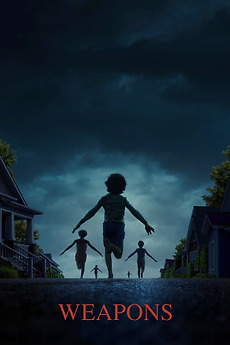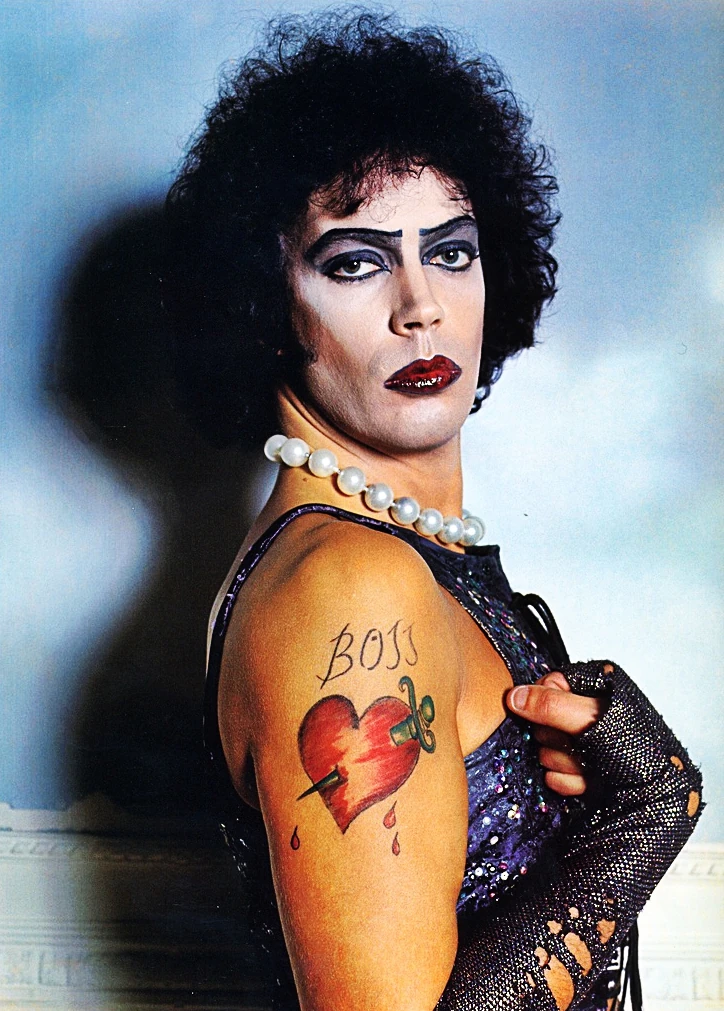17 children vanish into the woods at 2:17 am on a quiet Thursday night – this is the chilling premise of Weapons, dubbed by the media as one of the scariest summer movies of the year. This horror/thriller movie starring Julia Garner, Josh Brolin, and Amy Madigan was written and directed by filmmaker Zach Cregger, who is also acclaimed for his 2022 smash hit, Barbarian. Grossing over $135 million domestically and clawing its way to the number one spot at the box office over Jaws during this Labor Day weekend, this movie has created a social media buzz for critics and viewers alike.
First things first, the plot. Weapons revolves around a town that has just been struck by an awful tragedy: over a dozen third-graders, all from the same elementary school class, ran from their homes (with their arms outstretched in a ‘weaponized’ manner) and disappeared in the middle of the night from the quaint town of Maybrook, Illinois, leaving only one student (Cary Christopher, with a surprisingly good child performance) behind.
“I think what stood out to me the most was how they told the story. I’ve never watched a movie where they told it from different people’s perspectives in a very linear way,” said senior Emily Trottier. “They would show a part, and then go back and show the same part from a different point of view.”
The film clearly takes inspiration from interweaving narratives (see Paul Thomas Anderson’s Magnolia or Robert Altman’s Nashville), where the audience sees multiple characters’ perspectives on the same events, usually taking place over a short period of time (in Weapons’ case, around 72 hours until the final section). The structure of the film was almost like pieces of a puzzle that didn’t immediately fit together, where each viewpoint is a fragment of an already confusing mystery. While popular in intense dramas or madcap comedies, this style of filmmaking was rarely used in horror films until Cregger burst onto the scene.
However, the storytelling device isn’t the only thing Cregger does out of the ordinary; the movie is imbued with a strange sense of hilarity throughout the entire runtime. Multiple scenes, like the principal’s house or the ending chase, are shot in the style of a traditional comedy film, only with intensely horrific “punchlines” instead of the usual gags. Cregger beautifully subverts both the norm for horror and for comedy, and it only serves to enhance both elements. Long scenes of comedy serve to lull the audience into a sense of security, which is immediately shattered when the next terrifying beat is hit. On the other hand, when the audience has been on edge for almost 5 minutes (which feels like a lot longer when you’re terrified), a perfectly placed joke lands even harder than usual, such as with Austin Abrams’ character (known for his role in The Walking Dead and Euphoria) as the junkie who got many laughs in theaters.
“It doesn’t strike me as a full-on horror film…But I think it’s unique and that’s why a lot of people would like it,” said Trottier.
Interestingly, this style of filmmaking isn’t new for Cregger, not just in the film world, but funnily enough, on YouTube. Back in the early 2000s, when online sites were just gaining traction, a hugely popular genre of content was comedic music videos. Gaining popularity from songs and sketches that ranged from borderline criminal to just ridiculous, one channel rose to prominence for being downright disgusting in their lyrics: The Whitest Kids U’Know. Cregger was a founding member of this group, and this band of non-PC millennials jump-started his career within filmmaking and directing.
Throughout the film, it’s clear that the comedy techniques Cregger learned from his time as a YouTube sensation are not only prevalent in the film but also serve to put it in the running for the best horror movie this year. Weapons lays an unsettling but brilliant marker in 2025’s horror landscape.









